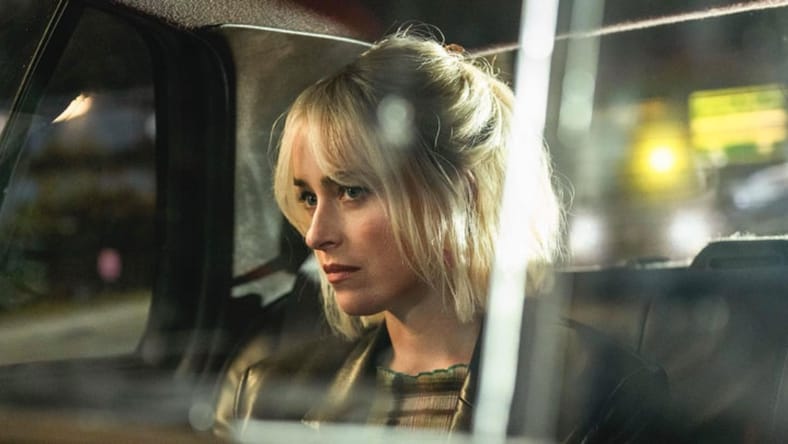
Christy Hall’s feature directorial debut, Daddio, takes place inside a taxi cab, starring Sean Penn as the cab driver and Dakota Johnson as his passenger on an emotionally revealing trip from JFK Airport to Hell’s Kitchen.
But because of how realistic the view is from out of the cab’s windows, you’d never guess that the actors never actually set foot inside a real cab.
In fact, the movie was filmed on a soundstage. But instead of using a green or blue screen to simulate the city going by outside, Hall used an innovative new technology that gives her the best of both the real and digital worlds.
Making Daddio
Using large, moveable screens made up of hundreds of high-resolution LED panels, Hall took real footage from New York City streets and projected it onto the screens surrounding the pretend cab on the sound stage, with Penn and Johnson sitting inside.
It’s a lot like the XR technology used on volume stages for sci-fi productions like The Mandalorian, but on a smaller scale, and without any digitally-rendered landscapes.
Unlike most projects that use XR technology — which is a catch-all term to describe extended reality, augmented reality, and mixed reality — Hall didn’t need to use video game engines like Unreal Engine, because she didn’t need to create a computer-generated environment for her film. She wanted to use real footage of the city skyline going by at night, but logistically, it made a lot more sense to shoot on a sound stage than on location.
The LED panels made for a convenient filming setup that worked perfectly for her small-budget and short, 16-day shooting schedule.
“Most of the people utilizing this technology — The Mandalorian is a great example — it’s sci-fi, it’s fantasy, it’s big budget, big spectacle stuff. And typically, what you’re seeing on the screens is computer-generated. The Mandalorian is on different planets,” the writer-director tells MovieMaker.
“It was like, Okay, what is the more cost-effective version of that? So what we did was, instead of computer generating what you see, we actually did the drive from JFK to Hell’s Kitchen twice with an array car with nine cameras. You take that footage, and you project that organic footage on these high-resolution, large-format LED panels that then surround the cab [on the soundstage].”
Also Read: ‘The X Can Mean Anything’: How XR Stages Are Disrupting Post-Production
It’s an ingenious, money-saving process that removes the biggest obstacles of filming on location. By not shooting the actors in an actual cab being pulled on a trailer, Hall didn’t have to worry about them being stuck in a car without breaks, losing precious daylight, having to sacrifice scenes due to time constraints, or dealing with unpredictable New York traffic.
By filming on a soundstage with LED panels to simulate the world going by outside, she could also control the exact time of day during each shot, and Johnson and Penn could get out of the cab and take coffee breaks whenever they wanted.
Another beautiful thing about LED panel technology is that, unlike greenscreen technology, it allows real light to bounce off of the actor’s faces and to reflect across the windshield in each shot. It even helped Sean Penn feel as if he was actually driving a cab.
“What’s so exciting about it is we were able to create this immersive experience for the actors. For example, Sean, as he’s driving, can see the road ahead of him, almost like a video game. He’s responding to the curves on the road with the wheel,” she says. “And then Dakota in the back can see cars passing and light. So instead of blue or green screen, we were able to actually create a world for them to react to and engage with, which is just so wonderful.”
“We can actually be very specific about the pieces we want to see outside the window. We can actually reset and pick certain spots that we liked,” she adds. “The background and foreground are both happening simultaneously, and all that information is going through the lens, so it looks real.”
Hall first wrote Daddio as a stage play and later reformed it into a screenplay in order to shop it around Hollywood. So the film’s two-man-show nature worked well for the limited taxi cab setting. But had she decided to shoot the movie using green screen instead of LED panels, “the [visual] effects budget really would have swelled into the millions,” she says, “because [we’d have to] fly all that later in almost every frame. I think this movie wouldn’t exist had that been the goal.”
She adds: “We’re showing that you really can use this technology in a way to help movies exist that couldn’t exist otherwise because of constraints of budget and time.”
Daddio is playing at the Toronto International Film Festival. It is currently seeking distribution.
Main Image: Dakota Johnson in Daddio
